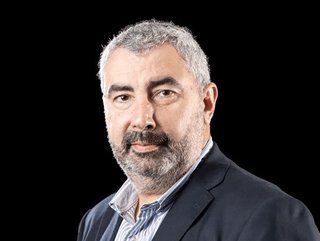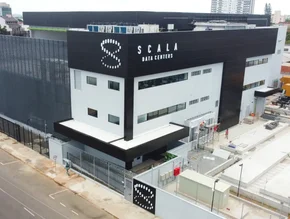Schneider Electric: Powering the Sustainable Data Centre

With new technologies continuing to put immense demands on the data centre industry, facilities around the world are having to use more power and energy to make good on their services.
In response, last year (2023), the European Commission released the reporting scheme to rate the sustainability of data centres operating across the European Union (EU). The legislation created a clear reporting scheme for data centre companies with a presence in Europe to share their sustainability ratings. This also included under the new Energy Efficiency Directive (EED), which came into effect in October 2023.
With this in mind, we speak with Thierry Chamayou, VP Cloud & Service Providers at Schneider Electric, about the impact of the European Energy Efficiency Directive (EED) and how data centre companies can best comply with new sustainability regulations.
“The EED holds a pivotal position within the EU’s legislative framework, aimed at advancing energy efficiency and mitigating climate change,” Thierry says. “As an integral component of the EU's ambitious Green Deal objectives, it encompasses the Fit for 55, which refers to the EU’s target of reducing net greenhouse gas emissions by at least 55% by 2030.”
Data centre operators “must move quickly” to comply
Under the new proposed legislation, the EU aims to bring legislation in line with Fit for 55 - which inevitably carries weight in shaping Europe’s sustainable future. Operators will have a responsibility to make information about their energy consumption publicly available.
Thierry says: “The complexity of new regulations coming down the line means that operators must move quickly to understand and comply with the new measures that will affect their business. All the information will form part of an EU-level database that will collect this information and other details, publishing them in an aggregated form, to rate the sustainability of data centres.
The aim of the scheme, Thierry says, is to create a baseline definition for a sustainable data centre. “These interventions can result not only in a considerable reduction of energy and water consumption, but also in the promotion of the use of renewable energy, an increase in the efficiency of the grid, or in the reuse of waste heat in nearby facilities and heat networks,” he explains.
Additionally, the updated EED states data centre owners and operators with a minimum installed IT capacity of 500kW must disclose their energy performance. They are expected to provide information on floor area, installed power, data volumes, energy consumption, power usage effectiveness (PUE), temperature settings, waste heat usage, water consumption, and renewable energy usage.
“Software will become integral to this reporting to monitor data centre sustainability,” Thierry says. “This includes integrated Building Management System (BMS), data centre infrastructure management (DCIM) and smart grid management to create a human to machine interface.”
He continues: “At the European level, operators are still required to deliver the first reports this year using 2023 data. But in conjunction with pan-European associations such as The European Data Centre Association, we are working ahead, by building a reporting regime that minimises work and differentiation.”
Schneider Electric: Helping customers navigate their energy targets
In order to get ahead of the EEG being implemented, the data centre industry must align on sustainability best practices. Thierry cites that collaboration and industry partnerships will be instrumental in achieving these objectives and that Schneider Electric is already well-placed to deliver.
“As a global impact business, we are ready to assist organisations in not only complying with the EED, but also in actively contributing to the development of sustainable practices and metrics,” he comments. “Schneider Electric initially announced its industry-first framework for data centre sustainability last year and has made a concerted effort to help standardise sustainability reporting across the sector.”
The company has also invested millions into its data centre sustainability strategy, which included a £7.2m (US$8.75m) investment into its Leeds facility in the United Kingdom and creating 110 new jobs over the next five years.
Likewise, its dedicated teams have been working to supply products that handle the changing scale and velocity of deployments for customers to provide unique and built-to-measure solutions.
As the data centre industry has never had standard reporting metrics before, it becomes challenging for operators and customers to evaluate the status of their sustainability progress.
As a result, Thierry states that Schneider Electric has created an industry-first Environmental Sustainability Metric Framework that addresses five key areas of impact.
These include energy, greenhouse gas emissions (GHG), water, waste, land and biodiversity.
“The whitepaper outlines the metrics across three reporting stages: Beginning, Advanced, and Leading,” Thierry says. “With this framework, we believe we are empowering the industry to take action and that data centre operators must address all these key areas to create the sustainable data centres of the future.”
He continues: “The most important step any operator can take is to acknowledge where they are and to begin to address their environmental impact. With the proposed sustainability framework from Schneider Electric and with our solutions helping customers navigate the reporting stages we are there to support them by being their partner and help them meet their targets.”
******
Make sure you check out the latest edition of Data Centre Magazine and also sign up to our global conference series - Tech & AI LIVE 2024
******
Data Centre Magazine is a BizClik brand






